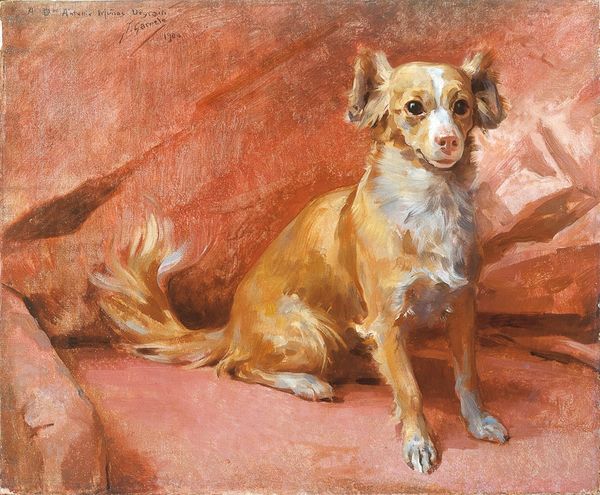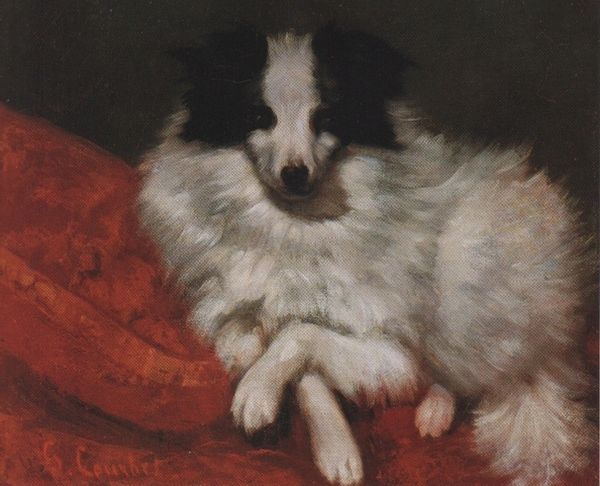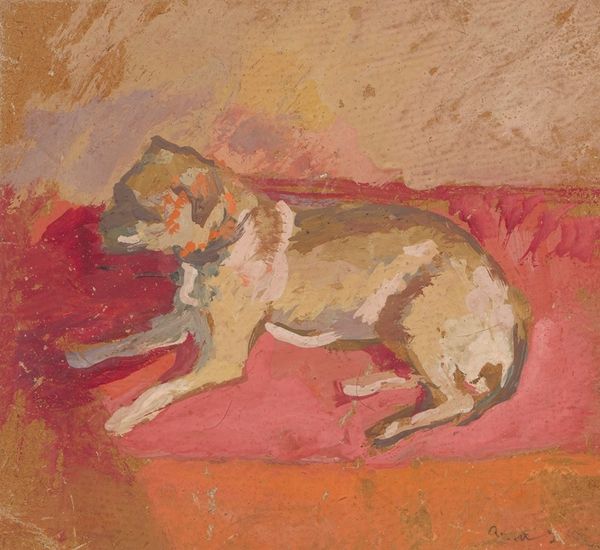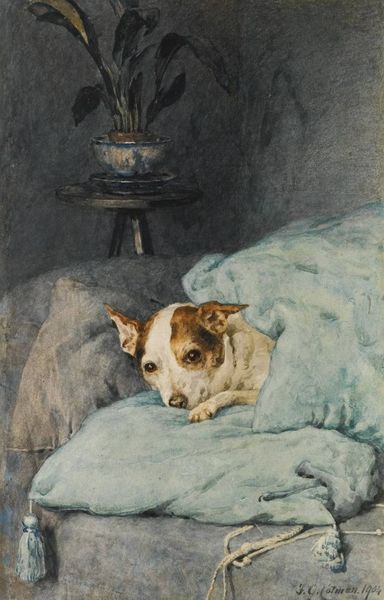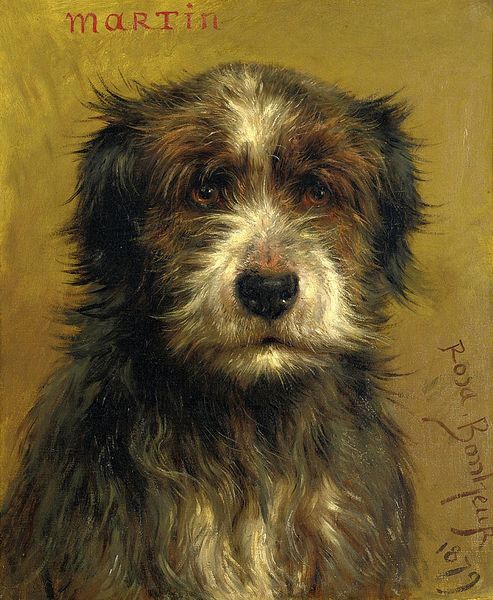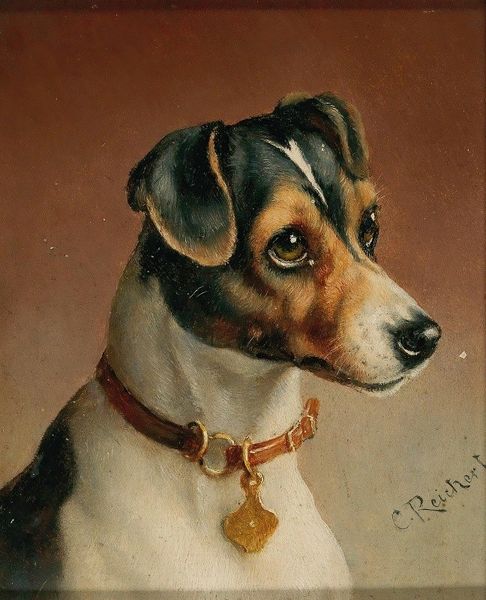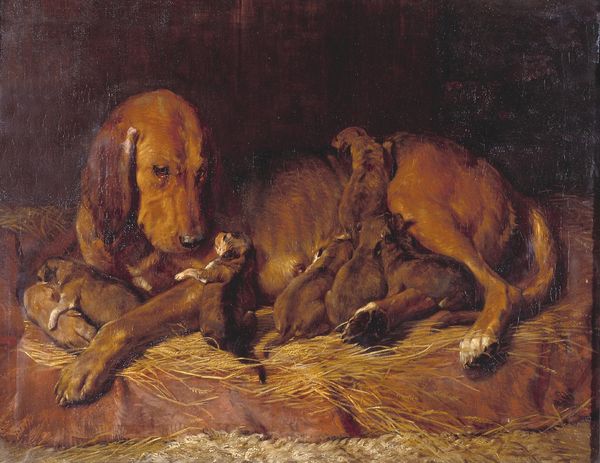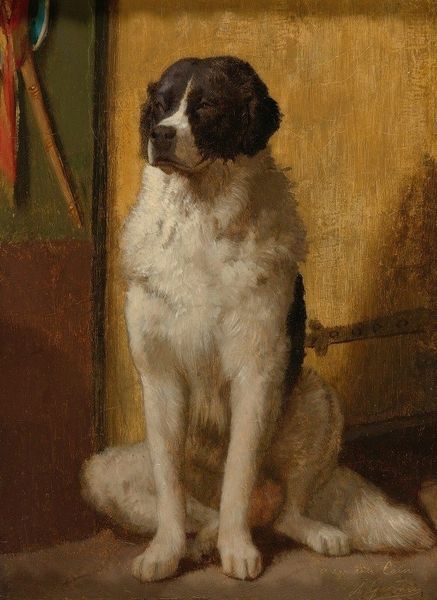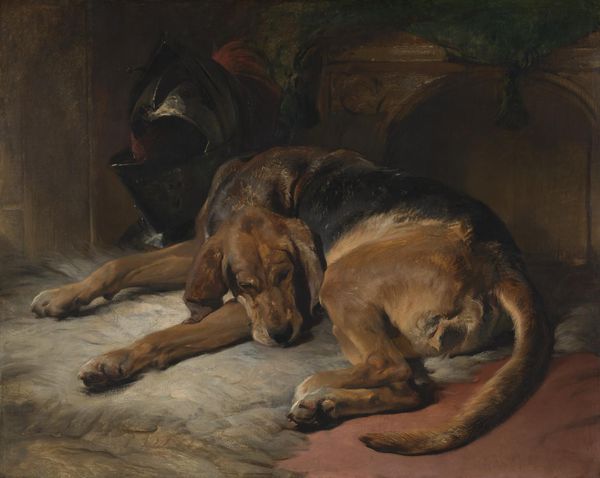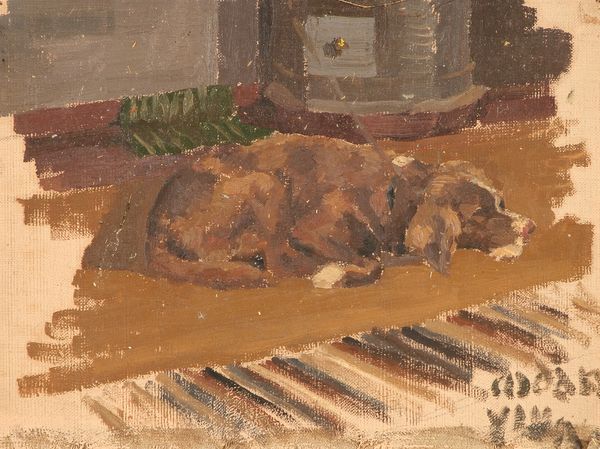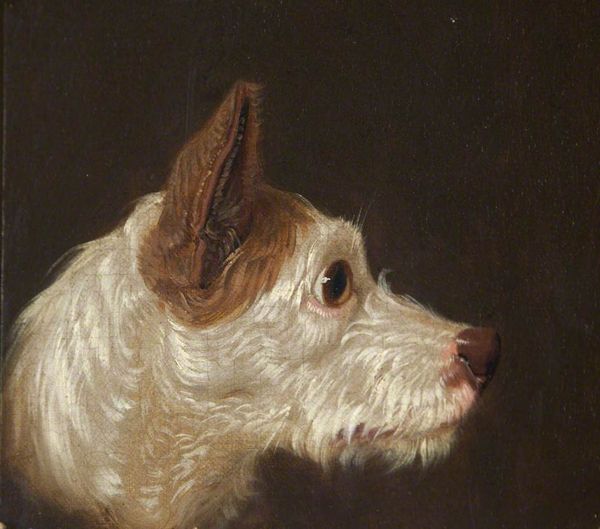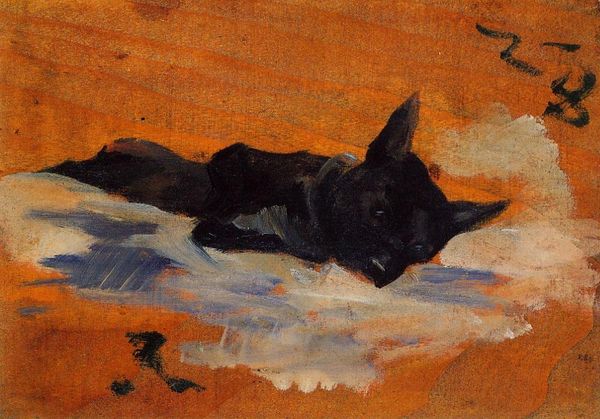
painting, oil-paint
#
portrait
#
animal
#
painting
#
oil-paint
#
glasgow-school
#
oil painting
#
animal portrait
#
genre-painting
#
realism
Copyright: Public Domain: Artvee
Curator: Ah, there's such a feeling of coziness radiating from this piece! Editor: Indeed. This is "Dog on a Chair," an 1882 oil painting by Sir John Lavery. What’s striking to you about it? Curator: Well, first of all, that dog looks utterly at home! I imagine it just hopped up there while Lavery was preparing his paints, as if to say, "Paint me, you must." But beyond the sheer adorable-ness of it, the palette gives me this autumnal vibe. Do you feel that, or is it just my seasonal affective disorder kicking in? Editor: I see where you're coming from with the autumnal reading. Considering the materiality of the oil paint—think about the process of layering those browns and oranges to evoke texture, the dog’s fur and the fabric’s stripes. What kind of labor went into procuring the materials, and the manufacturing of brushes, pigments? Lavery's realism does more than capture appearances. Curator: Okay, materialist! Always thinking about the underpinnings. But those earthy hues, the comfy-looking chair, and the dog's patient expression… It all tells me this wasn't some grand commission, you know? This was love; simple observation of daily life. The brushstrokes are confident, almost sketch-like in their freedom. It really looks as if he wanted to honor this furry friend. Editor: There's something so quotidian and universal about painting animals as domesticated beings. By immortalizing this creature on canvas, it almost becomes like another household belonging, as much as the striped seat it lays on. Were these dog portraits commissioned? Did Lavery breed them and commercialize his artwork after? The oil painting operates like an item, as much as it is the item pictured. Curator: Very well observed. I'm now considering this artwork as if I was there looking through Lavery's window... Such an informal moment in time; I want that dog and chair! Editor: This work highlights the intersections between fine art, animal husbandry, interior design and commerce. These animal portraiture were also quite common in the 1880s...
